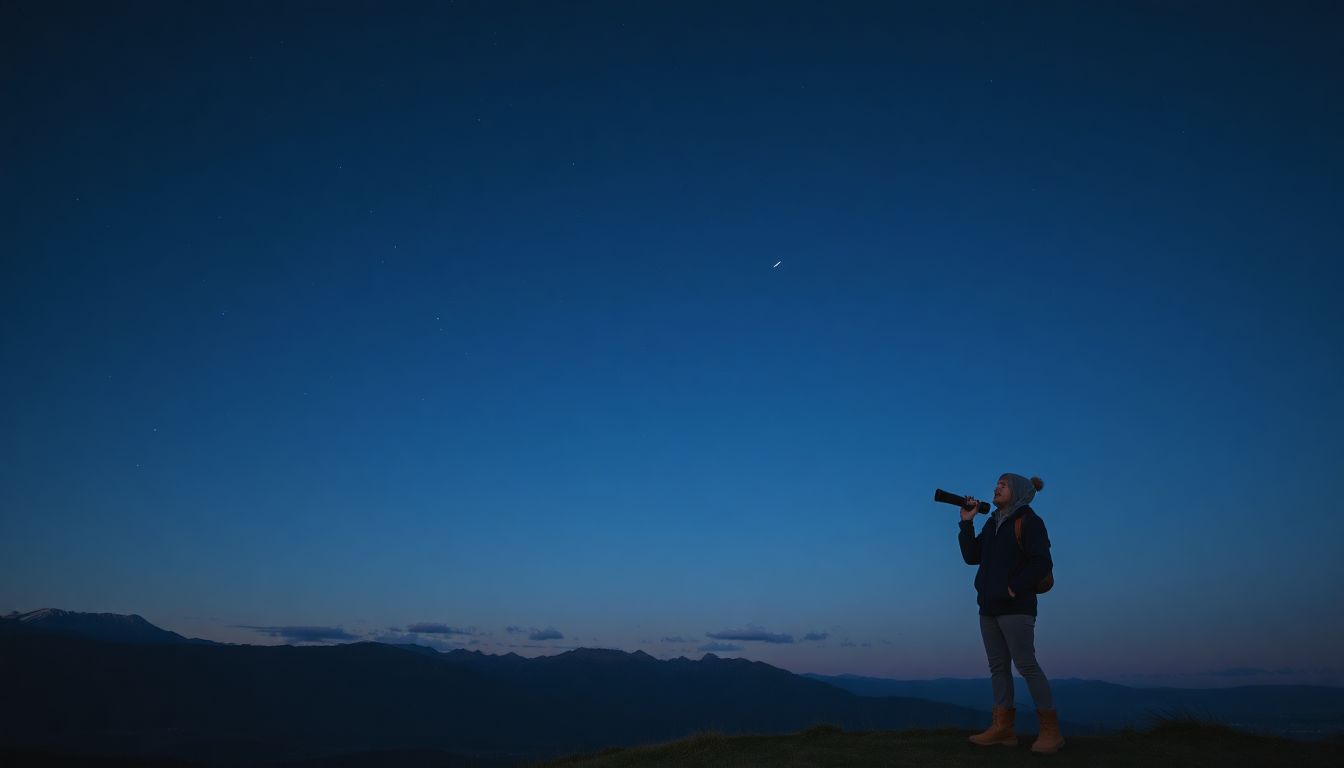
How to Find the First Star When You Look Up: A Complete Guide to Stargazing and Star Identification
Introduction
Looking up at the night sky is a timeless activity people have enjoyed for thousands of years. The wonder of seeing stars shine never gets old. For many, spotting the first star is a special moment—like the sky’s way of saying, “Hello.” Understanding how to identify that first star makes watching the night sky even more exciting. It turns simple stargazing into a journey of discovery.
Understanding the Night Sky: A Foundation for Star Hunting
The Astronomy Basics Every Stargazer Should Know
At night, you can see more than just stars. Planets, satellites, and even the moon light up the dark sky. Stars are not all the same. Some are brighter, some twinkle, and others stay steady. Earth’s rotation makes stars appear to move across the sky. Also, our orbit around the sun changes what we see each season.
Why The First Star Matters
For many cultures, the first star marks a special moment. It’s used in traditions, storytelling, and even navigation. In ancient times, sailors depended on the first bright star to find their way at sea. Today, spotting the first star helps us start observing and understanding the universe.
When Is the Best Time to Look for the First Star?
Optimal Seasons and Months
Some months offer clearer skies for star viewing. Winter and fall often provide better visibility because the atmosphere is calmer. In the Northern Hemisphere, late September through March has the best stars to catch. The opposite is true for the Southern Hemisphere.
Ideal Conditions for Stargazing
The perfect night has a clear sky, little to no moonlight, and low light from cities. Thick clouds or a full moon can hide those faint stars. Weather apps can help you plan for the best night. Using star chart tools can pinpoint when and where to look for the first star.
How to Spot the First Star in the Evening Sky
Recognizing the Right Time
Start watching as the sun dips below the horizon. During twilight, the sky darkens, and stars begin to emerge. It usually takes about 30 to 45 minutes after sunset. Outer areas away from city lights reveal stars sooner.
Techniques for Identifying the First Star
Look for the brightest objects in the sky. These are often planets or very bright stars. But don’t mistake an airplane or satellite for a star—stars twinkle steadily and stay put. Keep an eye out for a gentle, steady glow that doesn’t flicker.
Essential Tools and Resources for Finding the First Star
Using-Star Charts and Mobile Apps
Apps like SkyView, Star Walk, and Stellarium turn your phone into a personal star guide. They show real-time maps of the night sky. Point your device to the sky, and the app will tell you what you’re looking at.
Equipment Tips
Binoculars are perfect for beginners. They highlight stars and planets better than your eyes alone. For added convenience, a small red flashlight helps you read star charts without ruining your night vision. A compass can also help pinpoint the best viewing direction.
Tips from Experts and Experienced Stargazers
Insights from Astronomers and Astrophotographers
Experts recommend patience and starting early. Use your phone’s flashlight in red to keep your eyes adjusted. Avoid looking at bright lights before viewing. Many say the best way to learn is by practicing regularly.
Real-world Examples of Star Identification Success
Beginners often start by finding bright stars like Sirius or Vega. Once you spot them, it becomes easier to find other stars nearby. Some even start tying stars to constellations, making the sky feel like a map waiting to be explored.
Practical Steps to Find the First Star
Step-by-Step Guide
- Pick a dark, open spot away from city lights.
- Check the weather and moon phase first.
- Arrive about 30 minutes after sunset.
- Use a star app or chart to locate reference points like constellations.
- Scan the sky for the brightest object—likely the first star.
- Confirm its position with your app or chart.
- Enjoy watching it glow steadily in the night sky.
Troubleshooting Difficulties
Light pollution can block faint stars, so find the darkest spot possible. Clouds or haze can hide stars, so plan for clear weather. If unsure, wait patiently—sometimes, the sky needs a few extra minutes to reveal its secrets.
Conclusion
Finding the first star in the night sky takes a little preparation and patience. Learning the basics of astronomy, using helpful tools, and choosing the right night all make a difference. With each attempt, your confidence grows, and the sky becomes less mysterious. The key is to enjoy the process—each star you see is a step closer to understanding the universe. So grab your gear, look up, and start your journey among the stars today.

